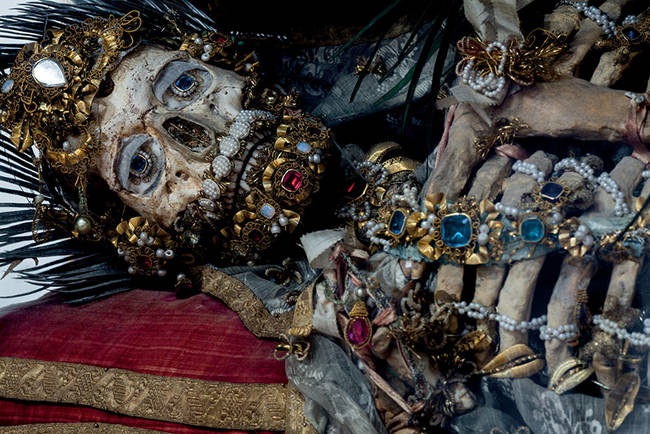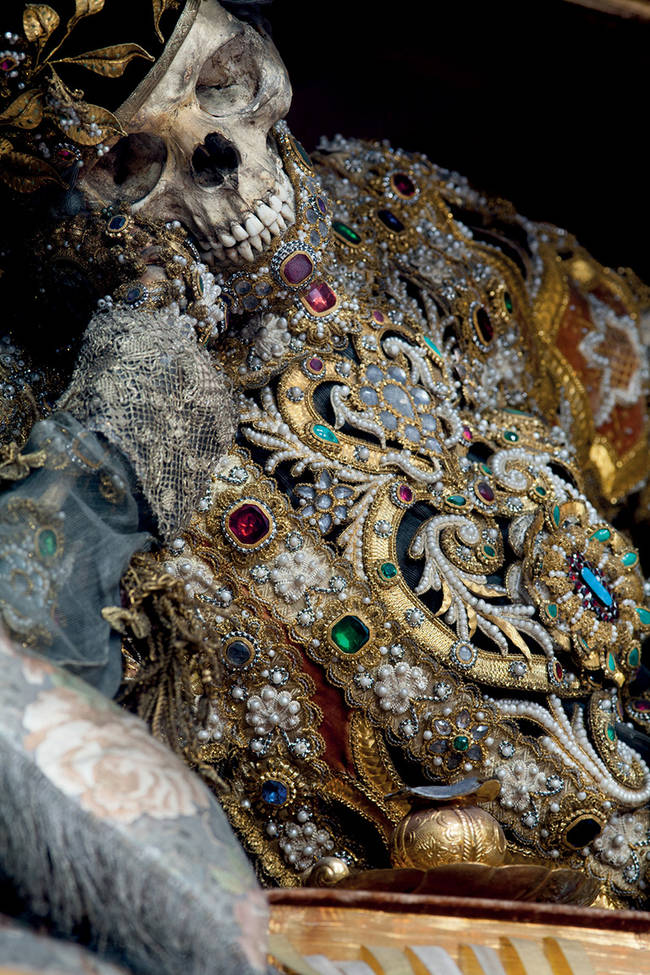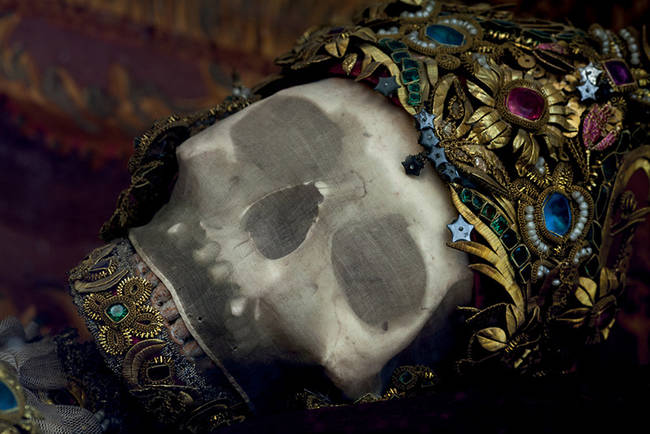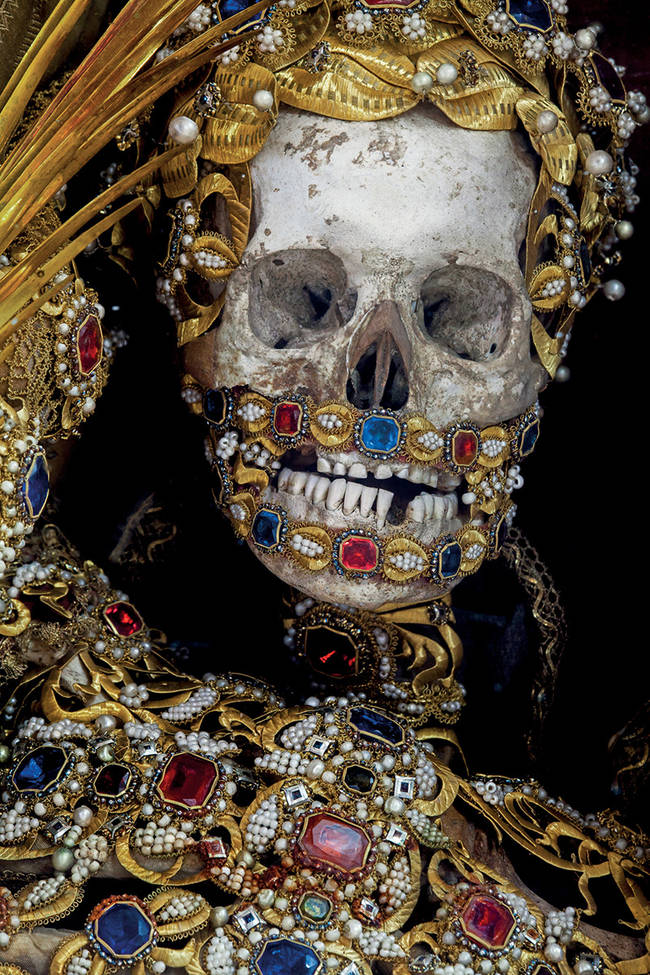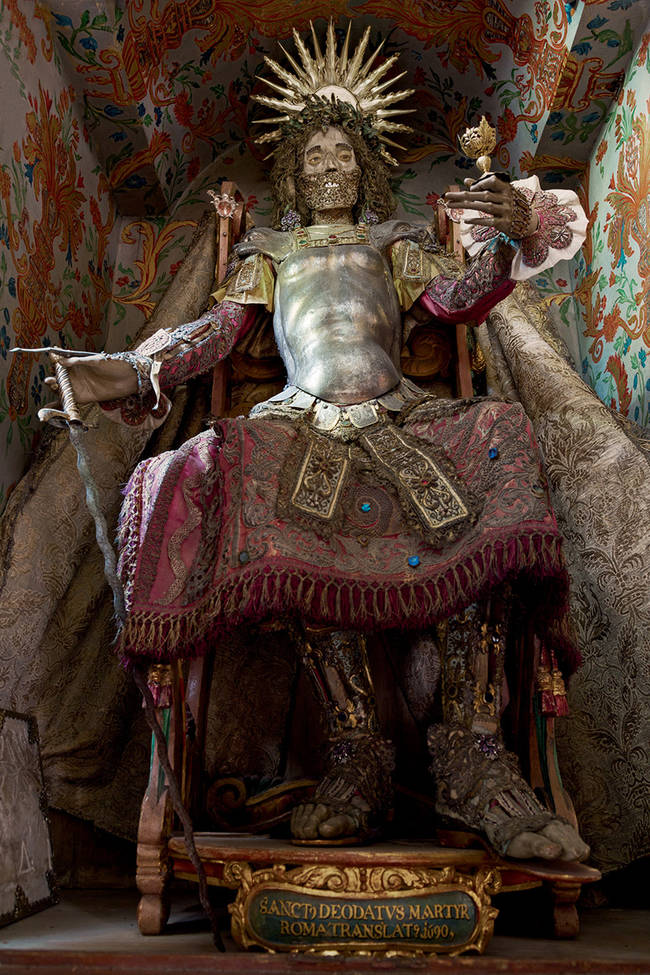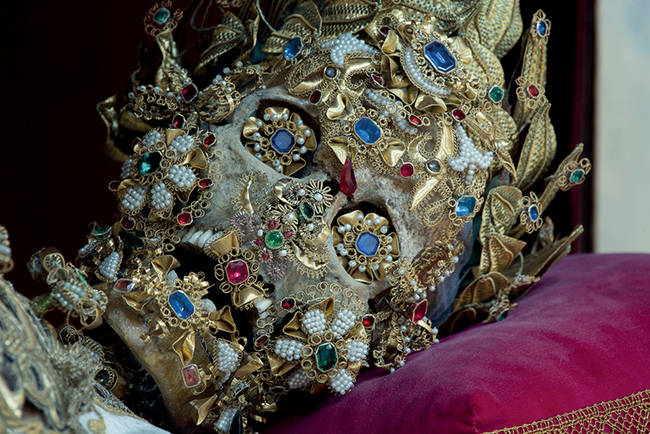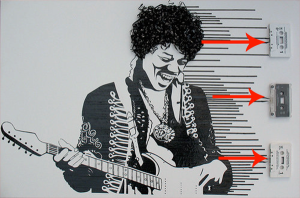When you imagine ancient or long lost treasure, doesn’t there always seem to be a skeleton close by? A reminder of a once present, now absent individual, the skeleton seems to appear as a sign that the treasure belonged (or belongs) to someone else. You can just imagine an old miser clutching onto his mass of treasure as time takes its toll on his mortal vessel. It’s the stuff of stories and legends we hear as children.
A new collection of photographs by Paul Koudounaris and called Heavenly Bodies (Thames & Hudson) contains pictures of skeletons and treasure. But these pictures do not show skeletons of pirates with their arms wrapped around an old treasure chest. These are pictures of enshrined Christian saints. Check out the history of these saintly specimens and some photographs from the collection below.
St. Valerius in Weyarn, Germany.
St. Valentinus in Waldsassen, Bavaria.
Skull of St. Getreu in Ursberg, Germany.
St. Albertus in Burgrain, Germany.
Hand of St. Valentin in Bad Schussenried, Germany.
St. Friedrich in the Benedictine Abbey in Melk, Austria.
St. Deodatus in Rheinau, Switzerland.
St. Benedictus in Munich, Germany.
(via: thisiscolossal.com)
Discovered in Rome in 1578, these skeletons were sent to Catholic parishes throughout Europe to replace relics destroyed during the Protestant Reformation. These skeleton saints were ornamented in jewelry and other fine clothing to display the riches of heaven that await after death. These are quite interesting photographs, and give a sense of the hopes and fears of people in these areas during this period. You can see some more of Paul Koudounaris’ work here.
